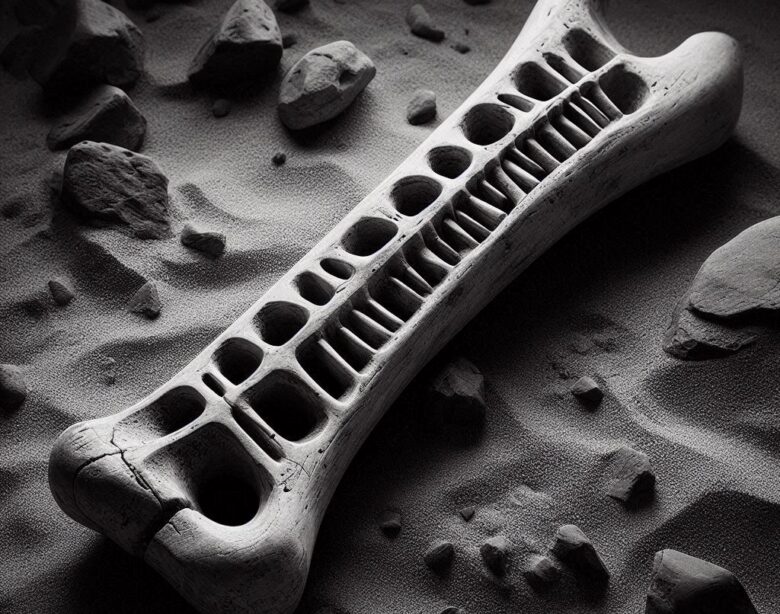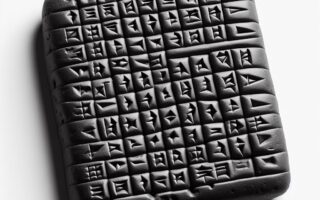The Ishango Bone: A Prehistoric Mathematical Marvel
The Ishango Bone is one of the earliest known artifacts that suggest humanity’s ancient understanding of numbers, counting, and possibly even basic arithmetic. Unearthed in what is now the Democratic Republic of Congo, this prehistoric artifact dates back to around 18,000 to 20,000 years ago and provides an intriguing glimpse into the mathematical practices of early human civilizations. Though its precise function is still debated, the Ishango Bone stands as a significant object of study in the history of mathematics and science.
Discovery of the Ishango Bone
The Ishango Bone was discovered in 1960 by Belgian geologist Jean de Heinzelin de Braucourt during an archaeological excavation at the Ishango site, located near the headwaters of the Nile River, adjacent to Lake Edward. The area, now part of the Virunga National Park in the eastern Democratic Republic of Congo, was once a rich and fertile region, providing sustenance for prehistoric hunter-gatherer societies. The Ishango site is famous for its numerous artifacts, including the bone tool that bears the name of the location.
When de Heinzelin discovered the Ishango Bone, it appeared to be a simple tool, likely a handle for a small blade, as one end of the bone has a sharp point made of quartz. However, the true significance of the Ishango Bone became apparent upon closer inspection. The bone is engraved with a series of notches grouped into three distinct columns, with each column containing irregular sequences of tally marks. These markings sparked an intense scholarly debate about their meaning and function, leading to various interpretations related to early mathematical activity.
Physical Characteristics of the Ishango Bone
The Ishango Bone is approximately 10 cm (about 4 inches) long and is made from the fibula of a baboon. It is covered in a series of carved notches, grouped into three columns. Each column features tally marks of varying lengths and groupings, suggesting that the engravings were not random, but were intentionally organized.
The arrangement of the notches into clusters has prompted many to consider the possibility that the bone was used as a counting tool, or even as a primitive calculator. The tallies appear to be grouped in sets that correspond to numerical patterns, leading some researchers to propose that the Ishango Bone represents an early form of mathematical reasoning or even base-10 counting, which would be the precursor to more sophisticated numerical systems.
Interpretations of the Markings
Several interpretations of the markings on the Ishango Bone have been proposed, each suggesting different levels of mathematical understanding by its creators.
1. A Counting Tool
One of the most straightforward interpretations of the Ishango Bone is that it was used as a simple counting tool. The presence of tally marks in groupings has led to the suggestion that prehistoric humans used it to track quantities, such as the number of animals hunted, or perhaps to record lunar or solar cycles. This interpretation positions the Ishango Bone as an early example of humanity’s effort to record and manage numerical information.
2. Prime Numbers
More sophisticated interpretations suggest that the Ishango Bone could represent an early awareness of prime numbers. The groupings of tally marks in some columns correspond to prime numbers between 10 and 20 (specifically, 11, 13, 17, and 19). This has led some scholars to argue that the Ishango Bone’s creators had at least some understanding of these special numbers and their significance.
3. Base-10 or Base-12 Arithmetic
Other researchers believe the Ishango Bone could be a record of calculations based on the base-10 or base-12 system, due to the grouping of marks in multiples of 10 or 12. These base systems are foundational in various modern counting methods. For example, base-10 forms the structure of the decimal system used in everyday arithmetic, while base-12 has historical significance in various ancient cultures, particularly in measures of time (12 hours in a day) and geometry (360 degrees in a circle).
4. Lunar Calendar
Another interpretation is that the Ishango Bone represents an early lunar calendar. Given that many early cultures tracked time based on lunar cycles, some researchers have proposed that the tally marks correspond to phases of the moon, with the bone possibly being used to predict moon cycles or seasonal changes. This would have been critical knowledge for prehistoric hunter-gatherer societies, aiding them in planning for agricultural activities or hunting expeditions.
5. Binary or Mathematical Symmetry
Recent mathematical analyses have suggested that the markings could represent an early understanding of binary arithmetic or mathematical symmetry. Some notches appear to be arranged in a symmetrical pattern, with groupings that suggest doubling or halving of numbers—concepts fundamental to arithmetic and computation. While speculative, this interpretation suggests that the Ishango Bone’s creators may have been experimenting with the kinds of numerical relationships that underpin modern mathematics.
The Ishango Bone and the History of Mathematics
Regardless of the specific interpretation of the markings, the Ishango Bone represents a critical point in the history of mathematics. It offers evidence that early humans were engaging in mathematical thought much earlier than previously believed. Its discovery has led researchers to reassess the timeline of mathematical development, pushing back the origins of counting and arithmetic to the Upper Paleolithic period.
Early Human Mathematical Development
The Ishango Bone illustrates that early human societies had a need for numerical systems, whether for counting, recording time, or engaging in early trade. This challenges the long-held assumption that advanced mathematical thought only emerged with the rise of complex societies and written language in Mesopotamia and Egypt.
Furthermore, the Ishango Bone suggests that prehistoric humans had an awareness of numerical patterns, such as prime numbers and symmetry, which are fundamental to higher-level mathematics. This awareness likely laid the foundation for more advanced mathematical systems that would emerge in later civilizations.
A Precursor to Numerical Systems
As a potential early example of base-10 counting, the Ishango Bone foreshadows the development of the decimal system, which would eventually be formalized in ancient Mesopotamia and later in ancient Greece and India. The idea of using symbols or notches to represent numerical quantities is a fundamental concept in mathematics, one that underpins not only basic arithmetic but also more advanced mathematical theories.
Influence on Modern Mathematics
While the Ishango Bone is a prehistoric artifact, its discovery has had an impact on modern mathematics and anthropology. By pushing the timeline of mathematical thought further back into prehistory, the bone has broadened our understanding of the origins of human cognition and intellectual development. It has also inspired a reevaluation of the role of early African societies in the history of science and mathematics, challenging Eurocentric narratives that have traditionally marginalized contributions from other parts of the world.
Conclusion: The Legacy of the Ishango Bone
The Ishango Bone is a remarkable artifact that offers valuable insights into the mathematical abilities of early humans. While its exact purpose remains a subject of debate, the bone’s markings suggest that even in the Paleolithic period, humans were engaging with concepts of counting, arithmetic, and possibly even prime numbers and symmetry. As one of the earliest known mathematical objects, the Ishango Bone has earned its place in the history of mathematics as a symbol of humanity’s innate curiosity and capacity for abstract thought.
Its discovery has not only enriched our understanding of prehistoric societies but also underscored the global origins of mathematical thought, with Africa playing a significant role in the early development of numerical systems. Today, the Ishango Bone remains a source of inspiration for mathematicians, historians, and anthropologists alike, as they continue to explore the roots of human knowledge and its ongoing evolution.
Please Visit Our Sponsors:
We only support vendors that we use ourselves in our home. The links below are our own links or affiliate links but know that we use all of these now, or have in the past. As the author/creator of this blog, I also tutor mathematics on Wyzant, sell on Etsy, create content on TpT, and learn Korean on Rosetta Stone.



